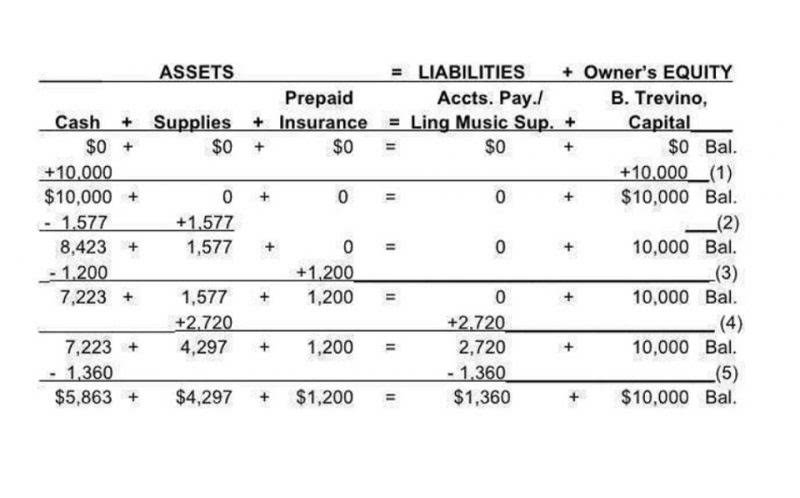
The contribution margin of your products indicates their individual profitability measures. This is valuable information when examining a product’s contribution margin in comparison with others. In simple terms, think of gross profit as the overall profit for the whole company, while contribution margin is like the profit for one thing the company sells.
How It’s Calculated
The contribution margin of individual products is easier to calculate because it only includes expenses that vary directly with sales, such as materials and commissions. The concept of contribution margin is applicable at various levels of manufacturing, business segments, and products. contribution margin income statement Fixed costs are costs that are incurred independent of how much is sold or produced. Buying items such as machinery is a typical example of a fixed cost, specifically a one-time fixed cost. Regardless of how much it is used and how many units are sold, its cost remains the same.
Fixed cost vs. variable cost
The metric uses direct labor and direct materials costs, not administrative costs for operating the corporate office. The difference between fixed and variable costs has to do with their correlation to the production levels of a company. As we said earlier, variable costs have a direct relationship with production levels. Variable costs are not typically reported on general purpose financial statements as a separate category. Thus, you will need to scan the income statement for variable costs and tally the list. Some companies do issue contribution margin income statements that split variable and fixed costs, but this isn’t common.

To Ensure One Vote Per Person, Please Include the Following Info
- Although it can be used as an overall measure of your business’s profitability, it may be most helpful on a line-item basis to assess the profitability of each product or service you sell.
- We may earn a commission when you click on a link or make a purchase through the links on our site.
- If the contribution margin for a particular product is low or negative, it’s a sign that the product isn’t helping your company make a profit and should be sold at a different price point or not at all.
- While gross profit margin and contribution margin are related, they measure different aspects of a company’s financial performance.
- In the United States, similar labor-saving processes have been developed, such as the ability to order groceries or fast food online and have it ready when the customer arrives.
The goods inventory was of the same quantity at the beginning and the end of the year. Its Cost of Goods Sold consisted of $130,000 in variable costs and $200,000 in fixed costs. Its selling and administrative expenses were $30,000 for variables and $150,000 for fixed expenses. Contribution margin takes into account only the variable costs of making a product or service, while gross margin considers all direct costs of production.
- Contribution margin takes into account only the variable costs of making a product or service, while gross margin considers all direct costs of production.
- Not all expenses will cleanly fall into either bucket, so it’s critical that your accounting and financial analysts are consistent with how they classify expenses.
- Investors and analysts use the contribution margin to evaluate how efficient the company is at making profits.
- Watch this video from Investopedia reviewing the concept of contribution margin to learn more.
- Gross profit is used to assess an organization’s financial health and performance.
For instance, a beverage company may have 15 different products but the bulk of its profits may come from one specific beverage. If the contribution margin for an ink pen is higher than that of a ball pen, the former will be given production preference owing to its higher profitability potential. Such decision-making is common to companies that manufacture a diversified portfolio of products, and management must allocate available resources in the most efficient manner to products with the highest profit potential. As an investor, you can use both to determine the profitability—and therefore the financial health—of a particular business. But neither percentage should be used as your sole source of data to make investing decisions.
Contribution Margin for Investors

To demonstrate this principle, let’s consider the costs and revenues of Hicks Manufacturing, a small company that manufactures and sells birdbaths to specialty retailers. Fixed overhead costs are never used when calculating the contribution margin. It’s important how you break down and categorize expenses from your income statement into variable and fixed cost buckets. Not all expenses will cleanly fall into either bucket, so it’s critical that your accounting and financial analysts are consistent with how they classify expenses. You can find the gross margin in a company’s income statement as the difference between the income from sales and the cost of goods sold.


While there are plenty of profitability metrics—ranging from the gross margin down to the net profit margin—the contribution margin metric stands out for the analysis of a specific product or service. Therefore gross profit/gross margin is the first step to analyze the initial amount of sales before we deduct the other operating expenses like advertising and other expenses like taxes and interest on loans. In order to avoid losses, the Gross Margin needs to be high in order to cover the operating expenses. Looking at the gross margin over time is also an indicator of the business’s growth and efficiency. Business owners can use gross profit margins to benchmark themselves against competitors.
Do Companies Want a High or Low Contribution Margin?
Önceki Yazılar:
- Çilimli Vajina Daraltma Ameliyatı
- Çilimli Mutluluk Çubuğu
- Çilimli Vajina Beyazlatma Labioplasti
- Steroid Satışı
- Contribution Margin: What It Is, How to Calculate It, and Why You Need It
Sonraki Yazılar: